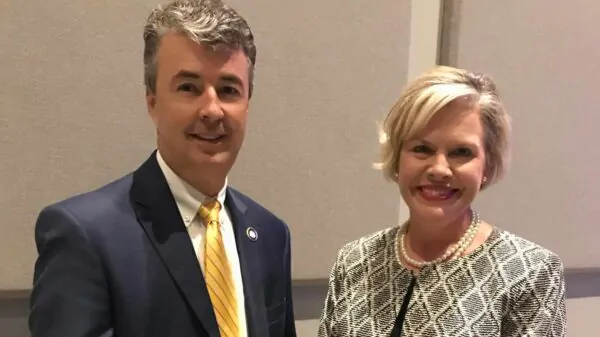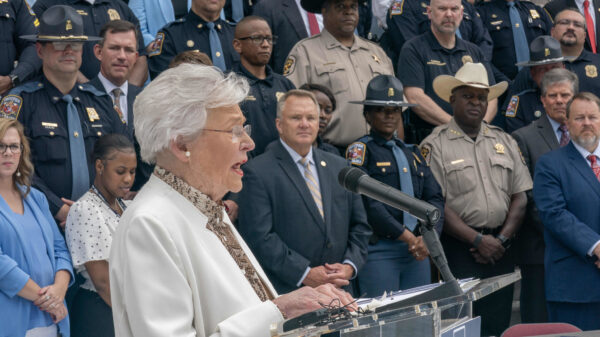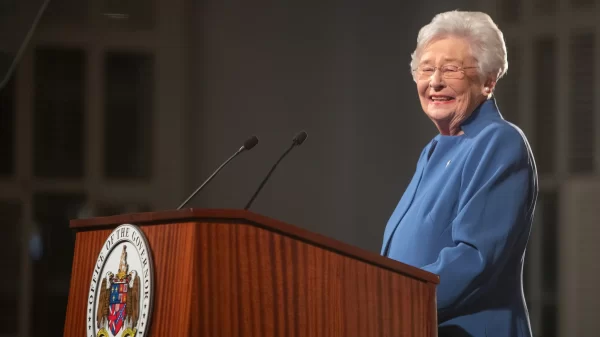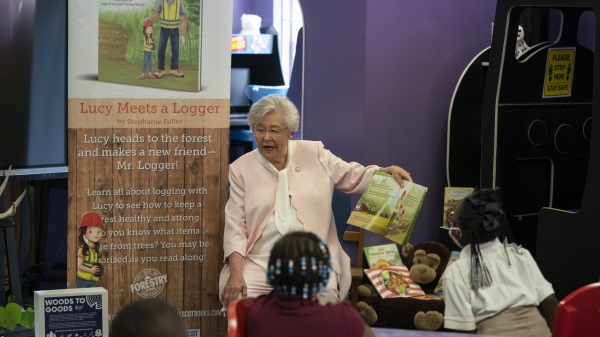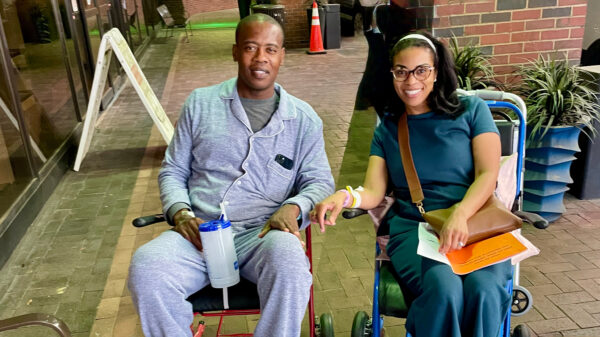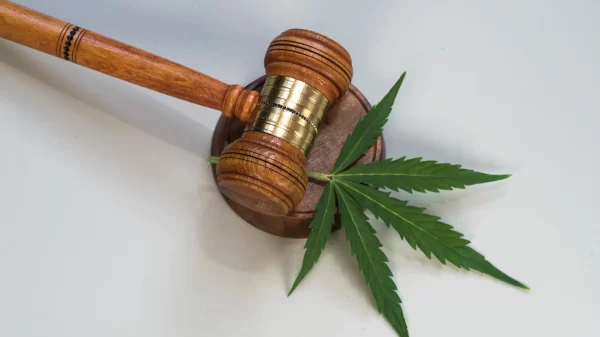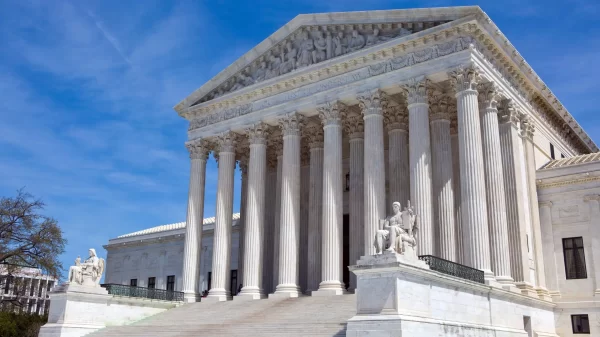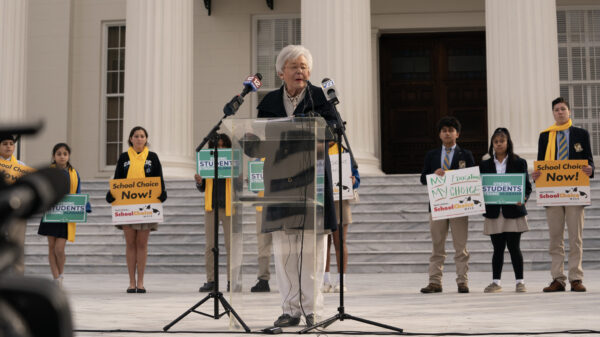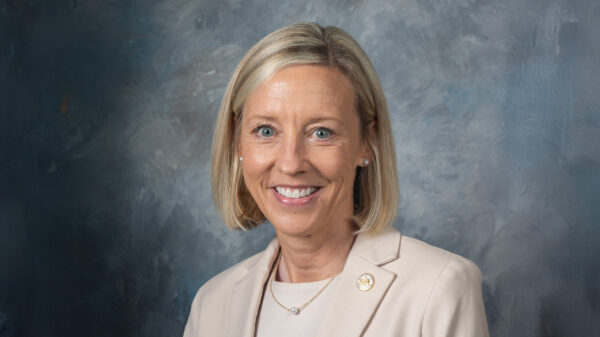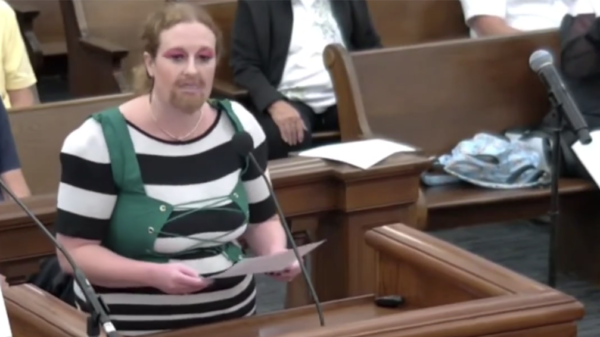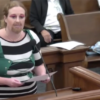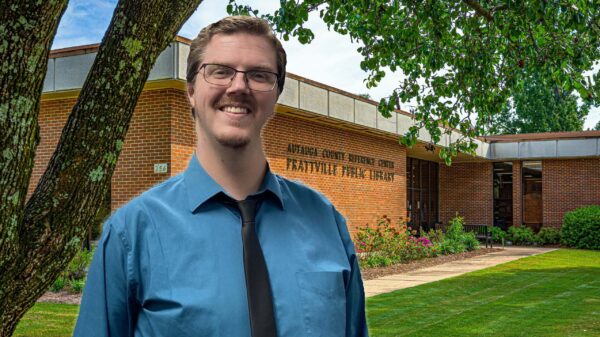The defamation cases between Roy Moore and accuser Leigh Corfman began Tuesday with Corfman herself taking the witness stand.
But first, each side laid out the crux of their cases in their opening statements to the jury.
Corfman’s team painted her as a typical 14-year-old girl in February 1979, preyed upon by a 32-year-old Moore with a penchant for pursuing high-school-aged girls.
“Leigh was a ninth-grader,” Melody Eagan, an attorney for Corfman, told the jury. “She didn’t have her driver’s permit. She had not had her first job yet. She’d never been to prom, never been on a date. Leigh’s normal day in 1979 was what a 14-year-old would normally do: go to school, get her homework done and hang out with friends.”
Eagan contrasted that typical teenage life against a recounting of Corfman’s allegation against Moore.
“(Moore) took (Corfman) back to (his) house,” Eagan said. “This time, Mr. Moore did something different: he laid down a blanket on the floor. This time he took off Leigh’s shirt and pants touched her over her bra and over her panties. He guided her hand to him. Leigh was terrified—this was not at all what she expected. She pulled back and she asked him to take her home and he did.”
The allegation was published as the primary accusation in a 2017 Washington Post article detailing multiple accounts from women who claimed to be pursued romantically by Moore as teens while he was in his 30s.
The defense characterized the teen Corfman as wild and out-of-control and called her allegations against Moore “one big ego trip.”
“(Corfman) can’t get enough of this limelight, she’s been basking in it,” said Julian McPhillips, a lawyer representing Moore. “She’s filed this suit so she can keep all that limelight going on.”
McPhillips also told the jury that the allegations were a part of a political conspiracy to keep Moore from winning election to the U.S. Senate seat he was campaigning for as the Republican nominee at the time the allegation was published.
“It was a a perfect storm; it was the only race in the whole country at that moment so all other states could put a focus on this,” McPhillips said. “I will say everybody in country was trying to get involved in this race, they put $35 million in this race. It made international news. Less than a month into the election, suddenly out of nowhere comes Ms. Leigh Corfman.”
McPhillips said the Washington Post “strategized” the release of the article to impact Moore’s campaign and more broadly pointed at an ongoing conspiracy to attack Moore.
“It is a conspiracy still going on nationally to keep Mr. Moore down,” McPhillips said. “They don’t like some of the things that he’s done with the Ten Commandments. Republicans didn’t like what he was doing either for standing up for the little guy.”
Corfman was part of that conspiracy “whether she realizes it or not,” McPhillips said.
One of the main lines of reasoning brought up by the defense was Moore’s “right to defend himself against false allegations.”
“It would set a hugely dangerous and hugely unAmerican precedent that he cannot deny a lie about himself for fear of defamation,” McPhillips said.
Eagan said Moore “victimized our client twice, once in 1979 when she was 14-year-old girl he preyed on and again in 2017 when he defamed her by dragging her name through the mud … She is suing because Moore has damaged Leigh’s reputation as an honest person.”
Only two witnesses took the stand to testify on Tuesday: Nancy Wells, Corfman’s mother, and Corfman herself.
Corfman recounts her interactions with Moore
Corfman recounted her meeting of Moore and subsequent meetings with Moore to the jury.
As in her original allegation, Corfman recalled meeting Moore at the Etowah County Courthouse in February 1979, sitting on a bench with her mother while waiting for a custody hearing. The hearing was to determine whether Corfman would change custody from her mother to her father.
Both Corfman and Wells testified that Moore came over and introduced himself, and told Wells he would sit outside the courtroom with Corfman so that she did not have to witness the hearing.
Corfman said she remained on the bench with Moore while her mother went into the hearing and that Moore chatted with her before asking her for her phone number.
“I felt a little giddy and excited for an older man asking me for my phone number,” Corfman testified.
Corfman testified that Moore followed up within two to three days with a phone call to her and they arranged a meeting, with Corfman requesting Moore pick her up on the street corner to avoid being seen by neighbors.
Corfman said she expected Moore to possibly take her out for dinner, but he took her back to his home instead.
They entered the house, Corfman said, and she sat down on a couch adjacent to a reclining chair, where Moore sat.
“We chit chatted, then he reached and grabbed my hand and pulled me over into his lap and told me how pretty I was and said some sweet things and kissed me,” Corfman said. “It made me feel excited and scared. I got up out of his lap and back to the couch.”
That was the end of the first meeting, Corfman testified, with Moore taking her back home upon her request.
A day or two later, Moore called again, according to Corfman. This is the meeting in which Corfman alleges Moore initiated sexual contact.
Corfman testified that within two days of that encounter, she told her two best friends at the time, Cyndi Tabb and Betsy Davis.
“We decided I wasn’t to see him again; we thought we could deal with it ourselves,” Corfman said. “Talking to Betsy and Cindy gave me basically permission to say no.”
Who did Corfman tell and when?
Corfman testified that she told her mother and stepfather about the incident when she was about 24 years old while staying with her family. She recounted coming down for breakfast and seeing a picture of Moore in the newspaper and informing her mother of what had happened.
“I asked (my mom) if she remembered him and she said ‘Oh yes, that nice young man that sat with you outside of the courtroom,’” Corfman said. “Yeah, not that nice.”
She also recounted telling friends of the family around the same time. She recalled telling her children about it between 2000 and 2001, at a time when she said she was considering confronting Moore or making her story public. She also said she told a friend, sometimes boyfriend, Eddie Sexton when the two were in high school and told her fiancé Mike Ortiz about it when Moore’s name came up.
Connecting with The Washington Post through Richard Hagedorn
Corfman testified about a friend Richard Hagedorn, whose brother works with The Washington Post. Corfman said Hagedorn had seen her react negatively whenever Roy Moore would come up and told the newspaper that there might be a story there.
The defense put a focus on Hagedorn’s connection, bringing up messages exchanged between Corfman and Hagedorn including a message in which Corfman requested Hagedorn download an app that would encrypt their messages.
Corfman testified that was because she had received messages that someone was attempting to log into her accounts from another location.
The defense brought up Hagedorn’s history with Moore, who they said once condemned Hagedorn for failing to pay child support. They also mentioned that Hagedorn’s brother is involved in a same-sex relationship after earlier describing Moore’s position against same-sex marriage. However, Judge John Rochester sustained objections to these lines of questioning.
How was Corfman damaged?
Attorney Melissa Isaak, who cross-examined Corfman for the defense, spent much of her time asking Corfman to provide how she was specifically damaged by Moore’s denials of her allegation.
“You can’t point to one sentence where (Moore) said you are a liar,” Isaak said.
Corfman repeatedly answered Isaak by stating that Moore implied that she was a liar through his denials of her allegations.
“One of the things I say when people meet me is ‘don’t ask if you don’t want to know,’” Corfman said. “One thing I pride myself on is telling the truth. This has taken everything Ive done and put a question on it … We can show over and again where he has made comments that are untrue. He has impugned my veracity and made it so that words I speak are not trusted. That’s damaging … He made it so the words I say are not trusted by people in our community, all over the nation.”
Isaak contended that anything Moore said was either “a denial, his opinion or campaign speech.”
Moore’s right to deny allegations
Isaak and Corfman went back and forth during the examination about what Isaak called Moore’s “right to disagree” about the allegations.
“His denial of my allegations is inaccurate,” Corfman said.
“He doesn’t have the right to deny it without being sued?” Isaak asked.
“He got sued because he continued to malign me in every form of media,” Corfman responded.
Isaak said Corfman injected herself into a hotly contested Senate race and opened herself up to public scrutiny.
“I injected myself into telling the story of what Roy Moore did to me when I was 14,” Corfman said.
Isaak asked whether it was true that Corfman wanted people to vote against Roy Moore and to influence the outcome of the election.
“I wasn’t there to tell people how to vote,” Corfman said, later adding that she didn’t want to see “my predator sitting in the Senate.”
Isaak told the jury that women unfairly get a presumption of telling the truth when making sexual assault allegations against men, which she said can ruin their careers. Isaak’s law firm explicitly only represents men, including against sexual assault allegations.
Decades of silence
The timing of Corfman’s decision to reveal allegations against Moore came up during the trial.
“These attacks are why she did not come forward,” Eagan said, referencing Moore’s denials. “She comes forward and what happens? She becomes a victim of a smear campaign.”
Moore had previously questioned why these allegations had not been made during prior campaigns.
Eagan also informed the jury that an “expert witness” would be called to the stand to testify that Corfman’s actions are consistent with teen abuse victims, especially victims’ whose abuser is in a position of reverence or power.
A troubled teen
The hearing at which Corfman claims to have met Moore was a custody hearing in which Corfman’s custody was being transferred from her mother to her father to deal with behavioral issues. Wells testified that the behavioral issues including changing grades on a report card and disobeying rules she set forth, particularly leaving the house when she was supposed to be grounded. Wells said it would be better for Corfman to be with her father who had a “stronger personality” as well as a second adult in the house to help handle discipline.
The defense used Corfman’s own description of her life in The Washington Post as well as the custody hearing to characterize her as a troubled teen.
Isaak questioned Wells about whether she was OK with the teenaged Corfman reading “harlequins romance novels” which contained “very adult content with seduction and sex.” Wells said she was OK with Corfman reading the novels. Isaak also brought up Corfman’s teen drug use, but Rochester stopped the questioning as it turned towards Corfman using drugs as an adult.
Corfman confessed that she is “no angel.”
“I’m a normal person. I’m not perfect,” Corfman said. “I’ve lived a full and active life. I sowed my wild oats when I was younger … I’m not an angel.”
Corfman added that she takes full responsibility for her actions and has never tried to blame her actions on Moore.
Soundbites
Not every question or statement fit neatly into the overarching structure of the questioning.
Isaak asked Corfman why she called Kayla Moore, Roy Moore’s wife, a “bitch.”
“Because she was being a bitch,” Corfman said.
McPhillips, in explaining to the jury why he, as a Democrat, would represent Roy Moore, a Republican, he called Moore “a Democrat in disguise.”
McPhillips also told the jury that “we all know examples of 14-year-olds who make themselves look older” although no claim has been made by the defense that Corfman misrepresented her age to Moore.
While speaking to the counsel for both sides after being called to the bench, Rochester could be heard stating “If you just stick to the issue, this trial might be over by March.”
The trial continues at 9 a.m. today and is expected to last up to 10 days in total.






